That Week We Stayed at Bohol
First Day, 22 Nov
A short intro to a long travel to airport
The day started with the perennial traffic. If you’re from Metro Manila, of course, a day of commute starts there. It’s not that we didn’t almost make it on time to the airport, it’s just that we weren’t expecting a bad traffic jam on a non-rush hour, but hey, why are we even surprised?
We did make it, though, on time - enough time, even, to have a quick lunch comprising unpalatable highway robbery airport food. The traffic situation that plagues the road of Metro Manila has converted the disciplined to disenfranchised in less time - much less time - it takes you to get from Ayala Blvd to… well, Paseo de Roxas.
Arrival at Bohol
When we landed to Panglao Airport, we hopped on an airport service vehicle. Prices are steep, as expected from any airport services, so manage your expectations accordingly. It was about a 40-minute uneventful ride towards our lodging in Tagbilaran, save for the occasional comments of the passengers (the three of us, Isya, Merci [her mother], and Ohio duh on the many an old wooden houses. This was just a small sample of Boholano architecture, and we all like it, simple and old that they are.
Our night stroll let us expose ourselves to the native streets of Tagbilaran, which at some point was filled a plume of smoke from a burning garbage heap inside some gated compound. As ‘Nay Merci noted, “Here’s no different than Dumaguete [where I’m from].”
The random zigzagging of our walk landed us on an improptu concert-watching in no less than the San Jose Parish. “Adventus” it was called, performed by Koro Seraphim, the National Qualifier to the National Music Competitions for Young Artists Foundation (NAMCYA) 2019 Alab ng Musika Competitions, Senior Choir Category.

Inside the Parish
Second Day, 23 Nov
We performed the basic functions of tourists in our own country, to explore Bohol’s country side. The hotel we were in had offered a travel package the day before, and after considering that the price seemed reasonable, we now have our own driver and sedan to do this touristy trip.
Our first stop was the Baclayon Church.
Nothing out of the ordinary, really, except that they have their own museum , whose memorabilia, as in all other museums, must not be touched. One of us (not Isya), uncultured that this person in is when it comes to behaving properly, didn’t know this fact until he already touched one old wooden artifact before the sign “Do not touch anything” appeared, replete with a short explainer why (something about the oil in our hands that would later appear and damage the object).
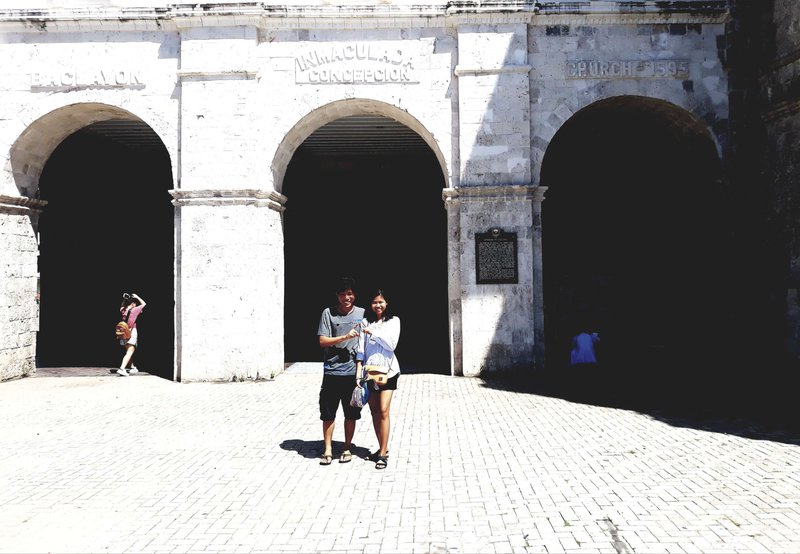
First Stop
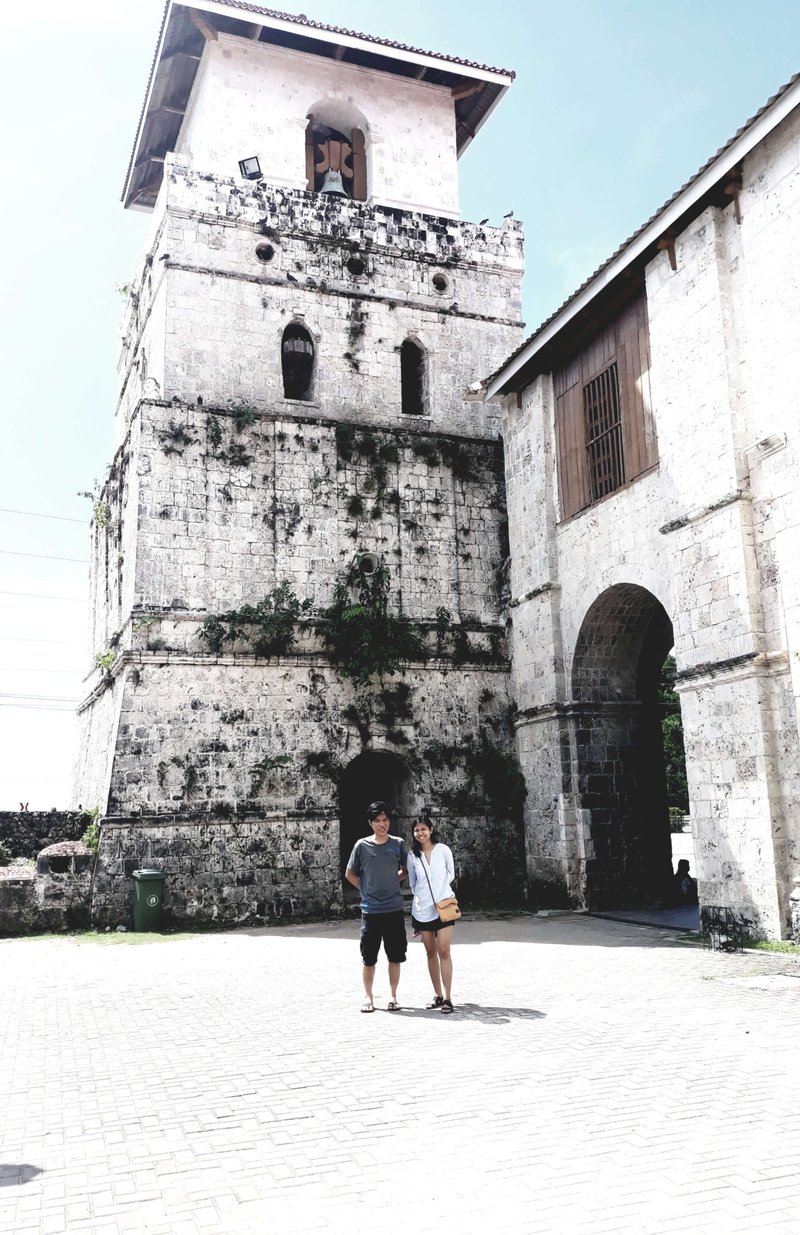

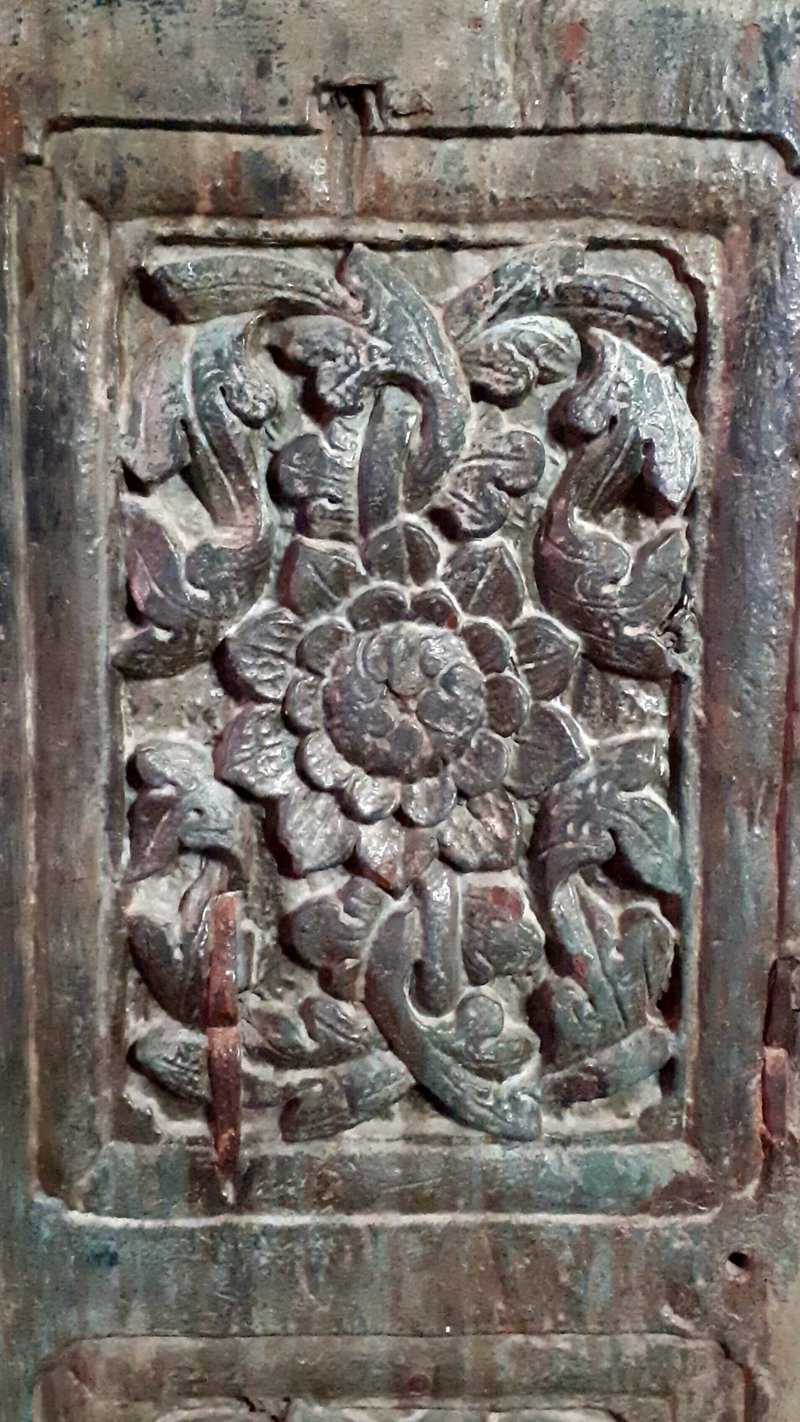
Detail of a wooden door that’s okay for human touch, we think
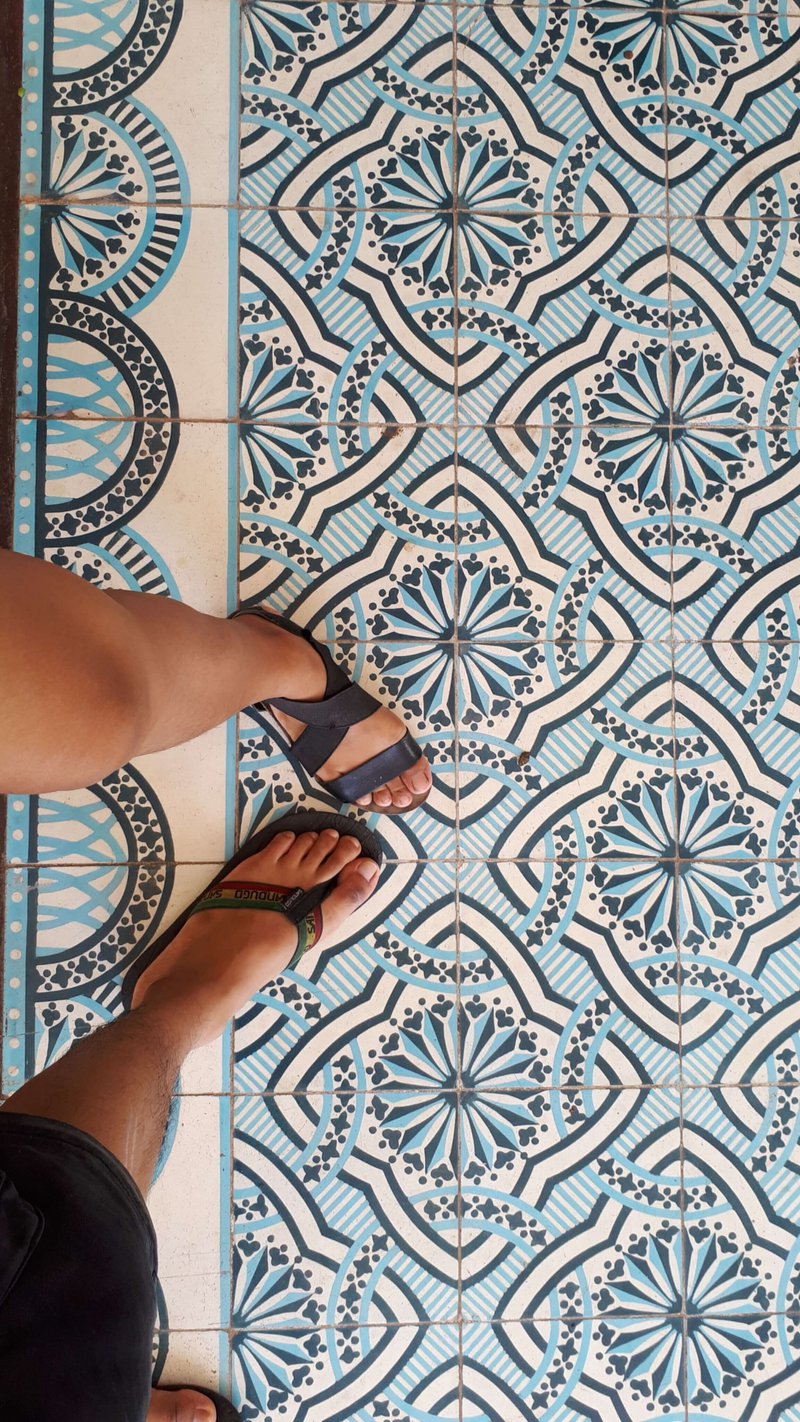
Geometric design of floor tiles
The Butterfly Garden
…disappointed us, in that it’s a claustrophobic experience with the butterflies. At the entrance, visitors are asked to pick the Butterfly Garden and/or Python Area. Only the former had interested us. They claim that some of the butterflies there are exotic species. If so, we asked ourselves, why are they still keeping them for public display?
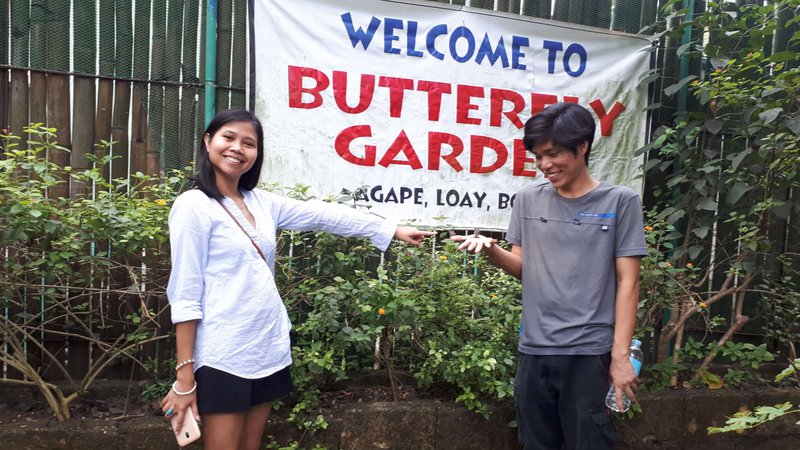
Look at how ‘disappointed’ we are
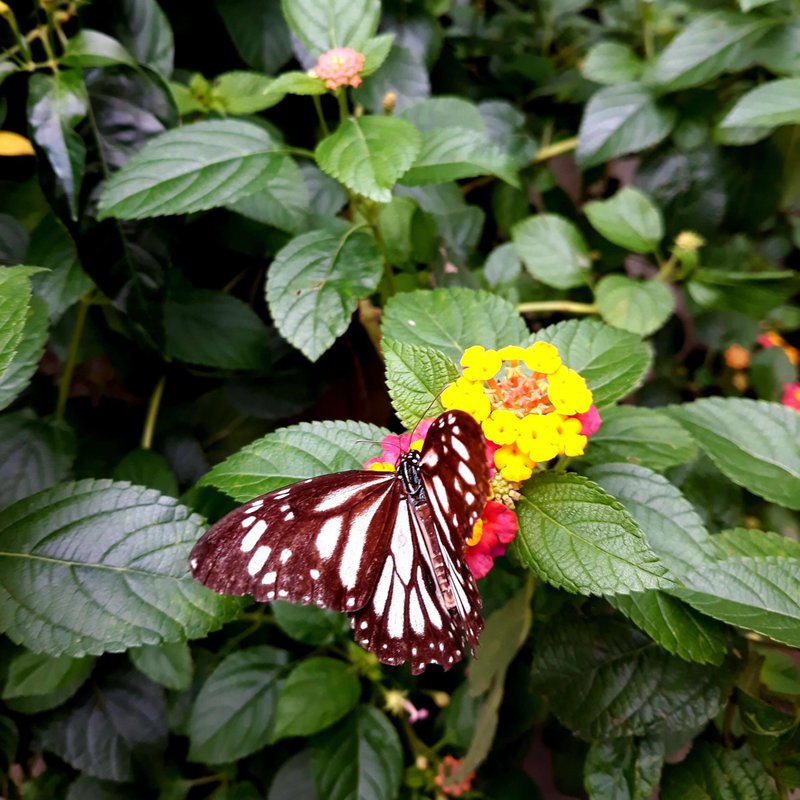
The only one cooperative enough for photo-op
Lunch at Loboc River
More accurately, it’s an all-you-can eat buffet on a boat as it cruises to and from the river, while musicians you share the ride with serenade everyone. Be prepared, though: the music is loud. People seem to equate fun with high decibels. They no longer like peace and quiet that Nature brings. It’s here that we also note that every component of this touristy affair has been designed efficiently to serve the maximum number of people at the shortest amount of time. Productivity underscores profitability, and thus, in chasing efficiency, tourism (at least in this part of the country) has become mechanical, heartless dare we say. Wait, pardon the digression; such was the effect of food coma.

Loboc River
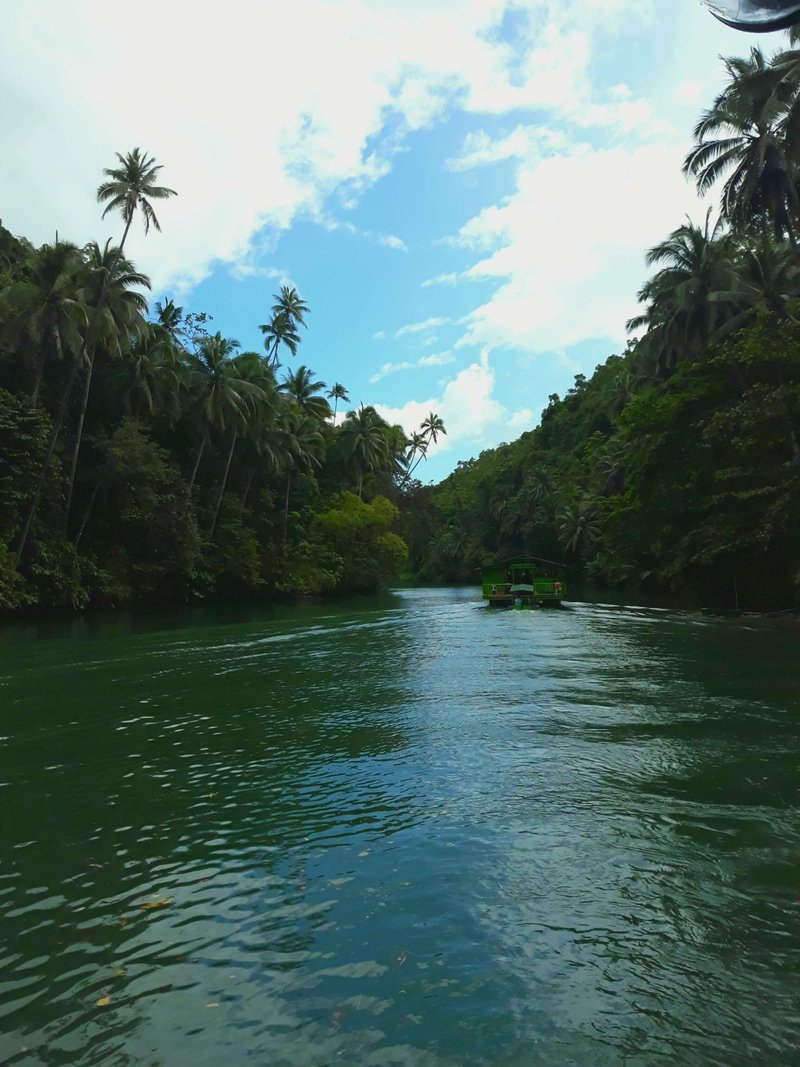
Loboc River, another view
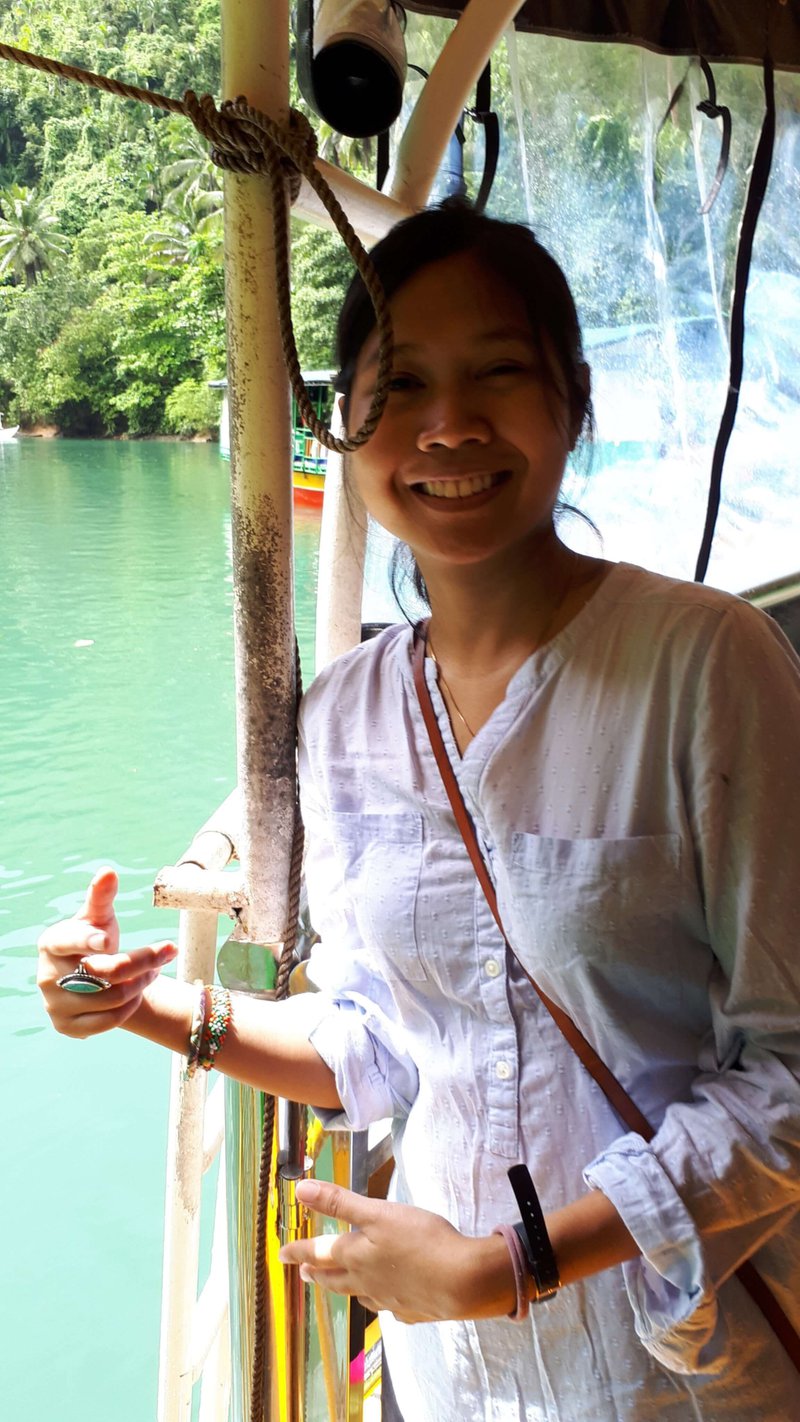
‘That Lunch, tho!’
Bilar-Loboc “Forest”
Speaking of heartlessness, birds may have developed through millenia of evolution how to spot a not-landing site. That’s why in the famed man-made forest, mostly mahogany (a non-native tree), no fowl flock nor frequent. Also, isn’t the term “man-made forest” a bit oxymoronic, if not outright arrogant? All that rant, and still we took pictures just to, uh, prove our point.
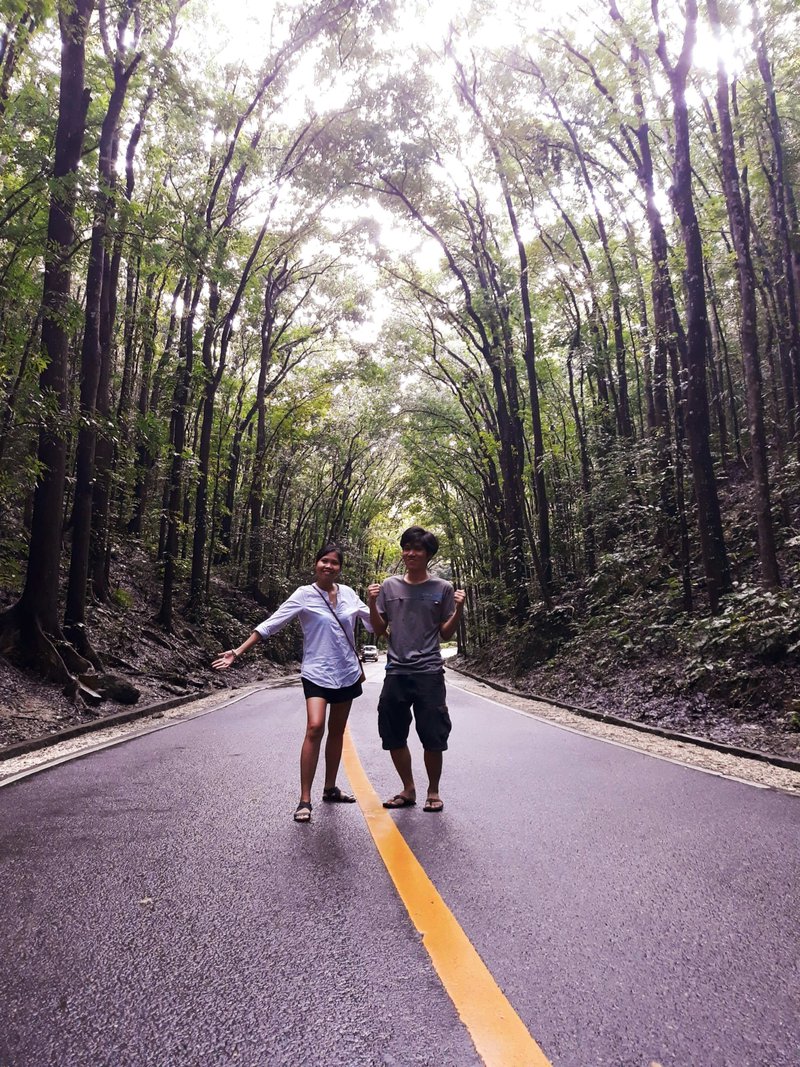
How we expressed our disappointment for the man-made forest
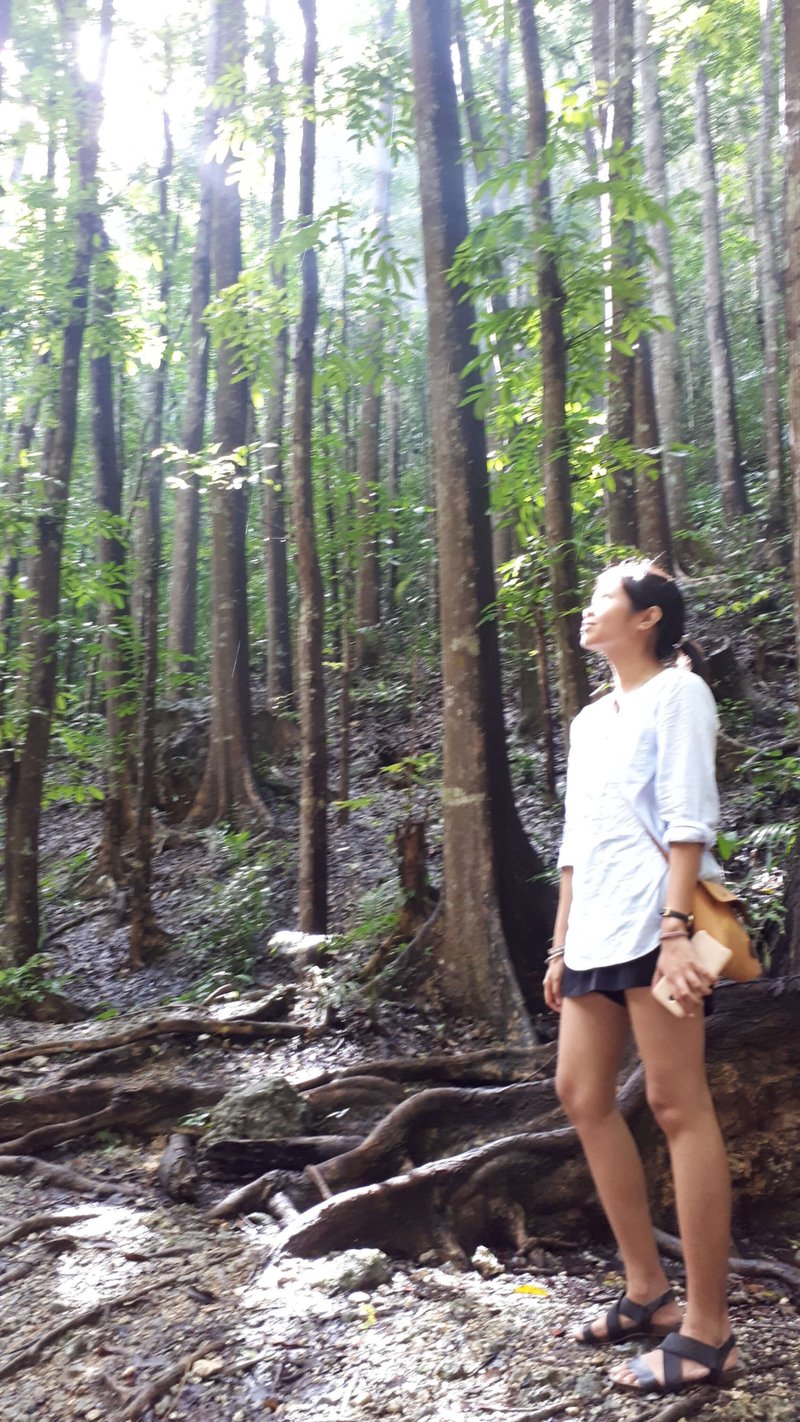
The end of suffering?
Tarsier Conservation Area
We also saw Tarsiers, small primates that have got to be nocturnal, or else ultraviolet rays would blind their big eyes. Each one that we saw either slept or kept still under the shades in which they were carefully placed for public viewing. For some who are hoping to see one “in the wild”, this experience would baffle you, as it did us. The walk inside the conservatory has been limited to a brief mingling with in-house guides as they pointed to the tiny nappers; and it’s done on purpose, for better and for worse. To some extent, we understand that tarsiers ultimately do not exist for the pleasure of human entertainment. We do hope that in the future, through the conservatory’s efforts, the primates’ population no longer is endangered.

Entrance to the Conservatory
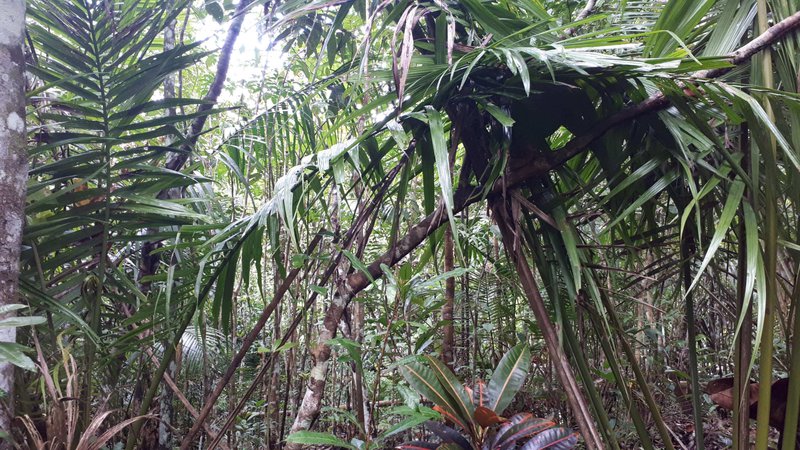
Find the Tarsier
Interstitial
We bought a walis-tambo near the Sipatan River in the Municipality of Sevilla. Its handle is made of bamboo, while the actual broom is made of coconut husks, although we sheepishly thought that the fiber closely resembles that of frizzy human hair. We skipped the Hanging Bridges altogether. No, we’re not specifically contemptuous against altitudes but to other tourists who were more than willing to take up the space and time of such narrow bridges.
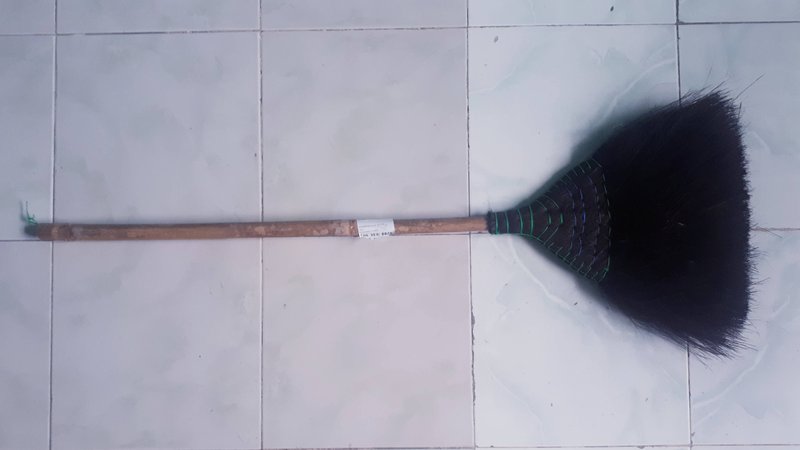

Here’s the full review of the aforementioned walis (for content, of course):
- Design: 3/5
- Durability: 4/5
- Functionality: 2/5
- UX: 2/5
Overall score: 2.75 out of 5. If you ever see this on your next Bohol trip, we don’t recommend you to buy it.
Now, the Chocolate Hills
are a sight to behold, as cliche as that is. More than a thousand of them - the hills, not tourists - compete for attention, and rightfully so. They each have their own trait: stout, lonely, distant, huge, etc. We only got up on one big hill, developed for the specific purpose of it being the viewing deck on which to view all the other hills surrounding it.
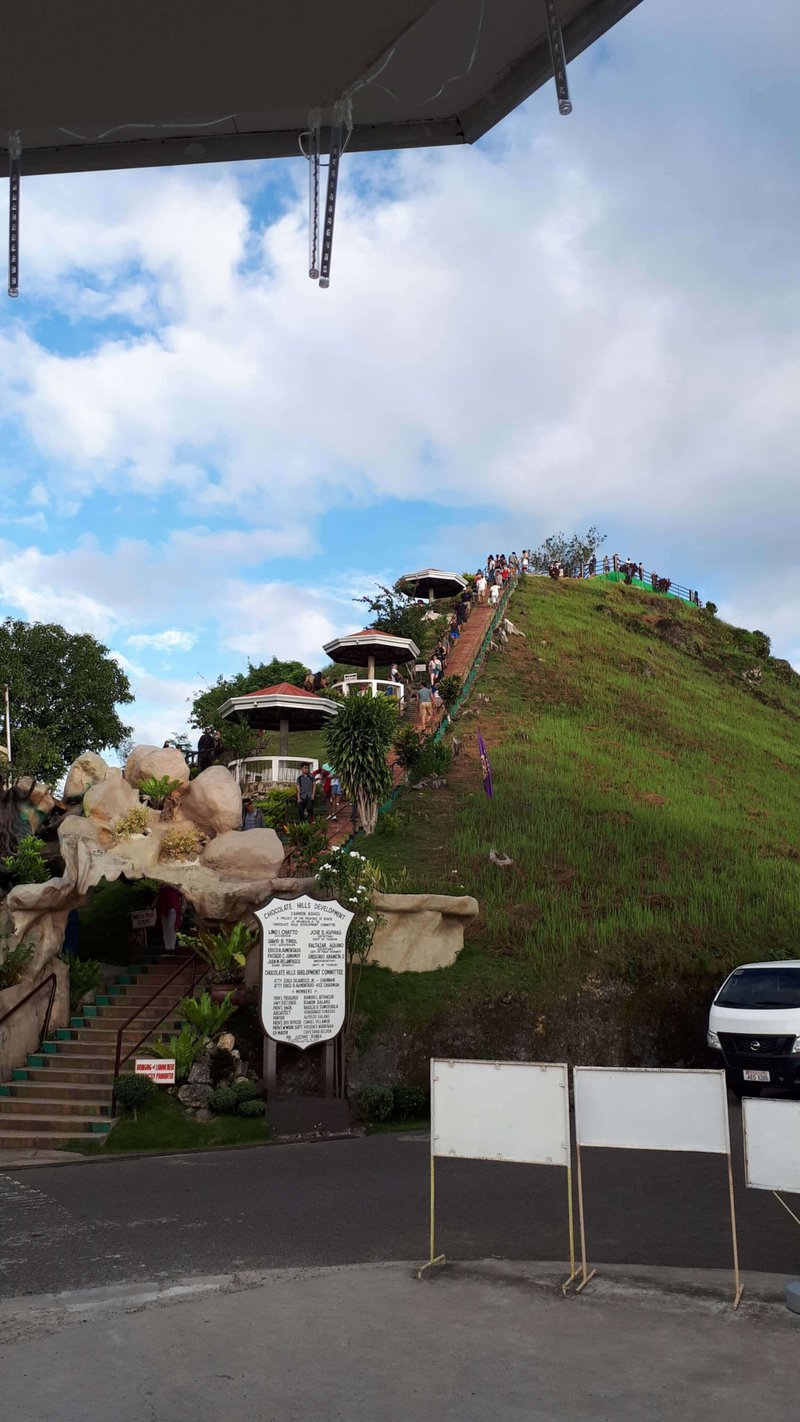
View from down below…
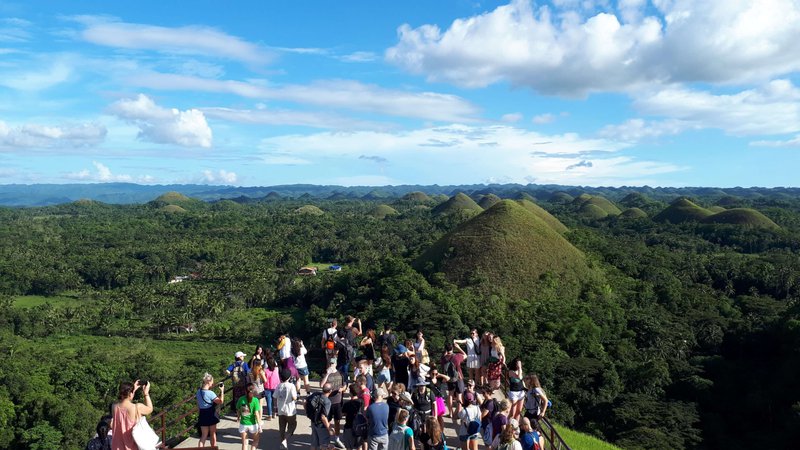
…and up above
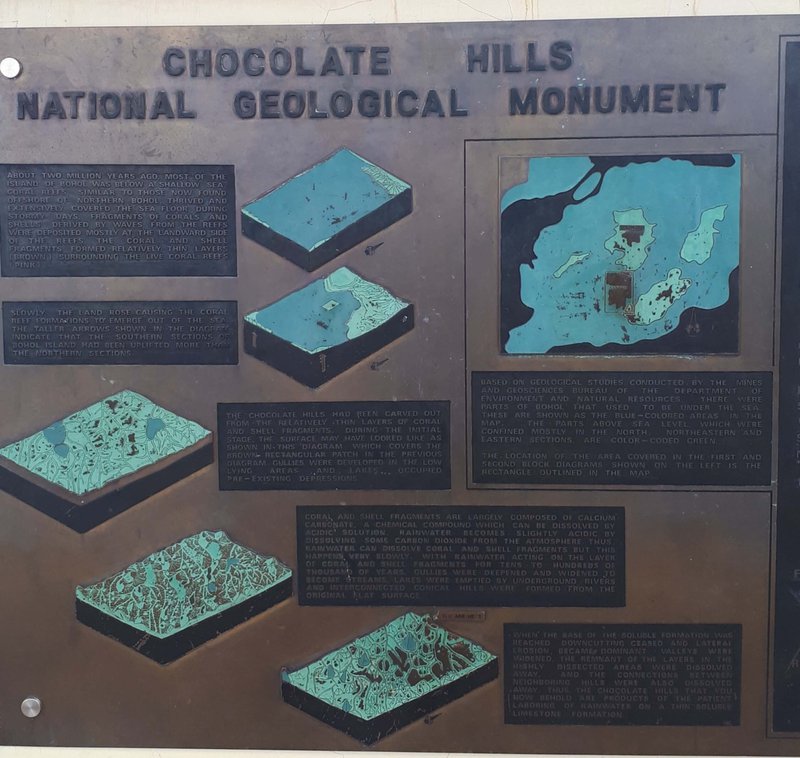
An explainer on how the hills were formed
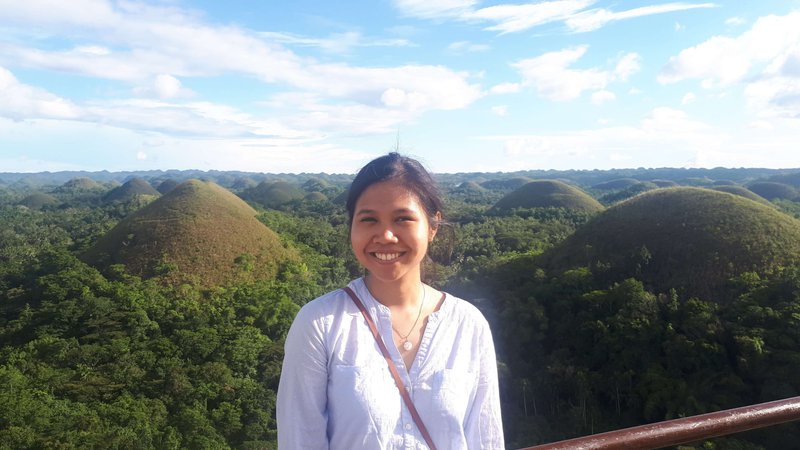
Isya
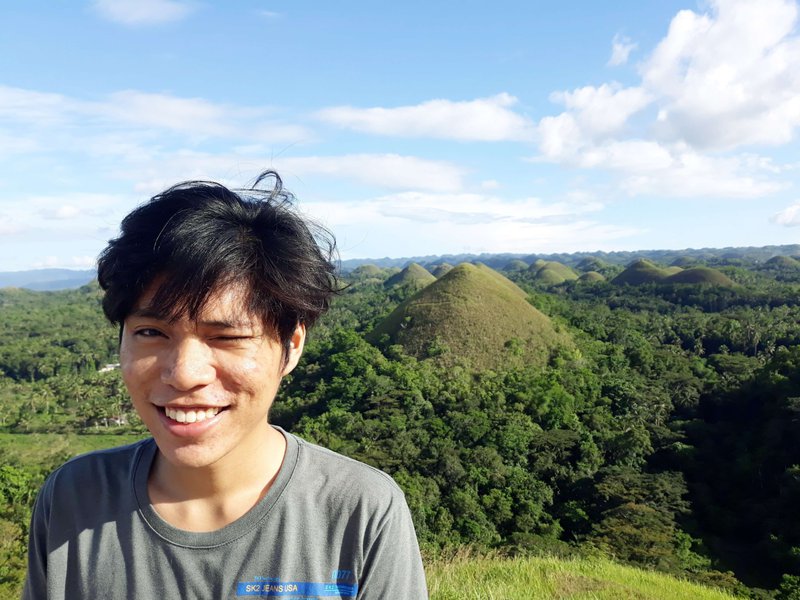
Ohio
Tuna Republic
Isya has so many memories of this chain of restaurant. This was where they had frequently eaten back on her field days at Agusan del Sur. We had a feast by ordering kinilaw na tuna, sashimi tuna, tinola tuna, grilled tuna belly, rice, and camote. With all the tuna we had, we were worried with the level mercury we have might consumed.
Third Day, 24 Nov
Free day to do whatever. This thing happens when people travel without a plan. It’s not bad per se. In fact, we are freed from the rigidity that plans make us comply, and we liked that. We had our breakfast near seaport. Our late lunch at Bee Farm Cafe in Island City Mall was the highlight of the day. In a simple day, food has to be the highlight in an otherwise relaxed pace.
Fourth Day, 25 Nov
For an island surrounded by seas, potable water in Bohol is hard to come by. Every drink must be bought or paid for. If it’s free, doubt yourself first before having the guts (literally) to drink it. Each cup of water must be sought after amid the choking thirst.
Swimming in the beach helped. When we transferred from Tagbilaran to Panglao that afternoon, it’s the only thing to look forward to: the almost-white sand shoreline littered with foreign bodies and boats with the setting sun as backdrop.
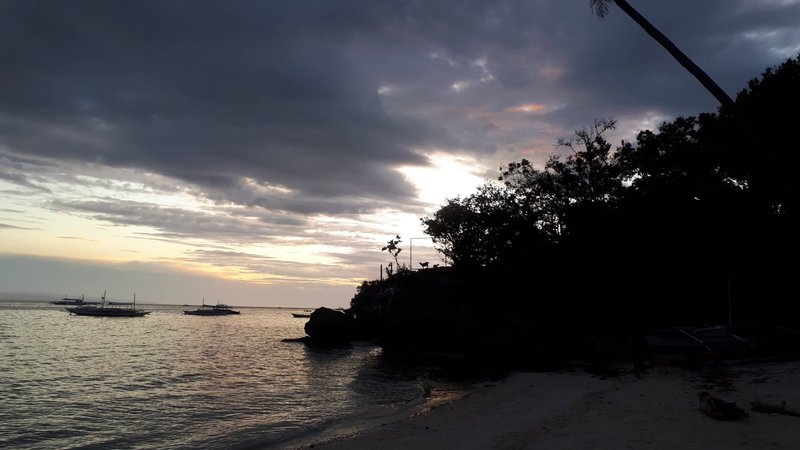
Sunset at the Alona Beach
In the night, a different life emerged from slumber. Commercialization as an economic tool for tourism had changed this quiet beach into something noisy, smelly, and shiny, as if an introvert remodeling their habits to conform with peer pressure.
Fifth Day, 26 Nov
Ohio flew back to Manila. “With what I saw, I’m not fond of Bohol” would be the personal feedback to give to those asking for anecdotes, but these experiences take time to process. (If it’s sounding too BS now, it’s probably because of the unpleasant experience of having to deal with airport security over a foldable bread knife. Not cool!)
Sorry to hear about Ohio’s experience with the new Panglao Airport having to confiscate his stainless foldable bread knife without even bothering to confiscate his wooden chopsticks (both, by the way, can be deadly weapons) which were a part of the mess kit.
We, Isya and Merci, stayed behind for one more night to supposedly have more beach time. Strapped for cash, they were unable to watch the dolphins and do island hopping.
So, we decided to have lunch on the famous Bohol Bee Farm restaurant which seems to be a resort also. It was Isya’s first time to visit the place but Merci had been there numerous times, and she was shocked with all the development and expansion.
Isya did not find the expensive things there impressive at all. Recall the meal we (Isya and Ohio) had at the Bohol Bee Farm cafe in Island City Mall - it was cheaper. One positive thing about the lunch is enjoying the pineapple and basil juice. It’s one of those marriages of ingredients that make a pricey drink worth it.
Even with all the restaurants and bars in Alona beach, it seems to be missing Japanese restaurants. We, Isya and Merci, combed the the stretch of the beach looking for one because Merci was craving for some Japanese dishes, and we found none. We settled with Lost Horizon restaurant, a beachfront dining with a live band playing songs of the oldies.
Sixth Day, 27 Nov
On the last day of our trip, we looked back (almost literally) on why we appreciate the second inn that we booked, called Walkerz Travellers Inn. Its distance from the Alona Beach not only provided serenity during our stay, it also required exercise to get to the main road, although the 7-minute walk is never that pleasant so long as the ways are still muddy, rocky, and unpaved.
We made sure to check the Panglao Public Market in for local weaved baskets. We didn’t bring home any, though.
Next stop: St. Augustine Church which was about 400 meters away from the market. Beside the church is a Catholic school, and not far from it is the barangay hall. Isya wasn’t keen on stepping inside the church while the floor was being mopped. After Merci took pictures of the inside, they decided to look at the park nearby.
On our way out, Merci saw two men holding sticks with large nets which she recognized as contraption for catching stray dogs. Merci, always inquisitive, asked them what they were doing. They said they were from the provincial veterinary office, and were out to catch dogs. After the exchange, we learned that the dogs they caught would be brought back to the barangay hall, to be confined in their backyard. If, after three days, no one claimed them they would be euthanized. However, euthanasia is simply our place-holder here, as we haven’t really verified how they put down the dogs.
They allowed us see the dogs they caught. What we saw was heartbreaking - rows of cages were lined up at the back of the barangay hall by the mangroves without roofing. They were exposed to elements. The first cage housed a very sick dog who was having a hard time sitting and laying down because of an inflamed wound at the rear part of its body. The dog wailed in pain, and hearing it only worsened whatever sickness we’re already feeling.
We tried to find out more by asking a man there, but he seemed to be just passing by. Merci couldn’t help but break down when we were finally out in the open area. She wondered how the church, just a few steps away, wouldn’t do anything about the plight of the stray dogs being impounded. There was no compassion.
Most of the street dogs became stray as a result human irresponsibility. There are humane ways to handle this issue of high numbers stray dogs. One of the most effective so far is Trap-Neuter-Vaccine-Release (TNVR) program which local government units can implement. The concerned community can also participate through sponsorships and volunteerism.
There was a defeated feeling after this encounter, a kind of helplessness of not being able to do anything immediately. We walked towards the public market to wait for the bus shuttle. By this time, we needed to go back at the inn to prepare for our flight that afternoon.
Parting thoughts, by Isya
The Bohol trip was a break from the pressures of city life. It’s also a chance to be with the people I love, and to spend time with them. But the Bohol I had longed for, the one my mother, Merci, had talked about years ago, was nowhere near the descriptions of peace and quiet in those stories. It could be that I have just high expectations of it not being another touristy crowded place. -o)-
Go back to Index